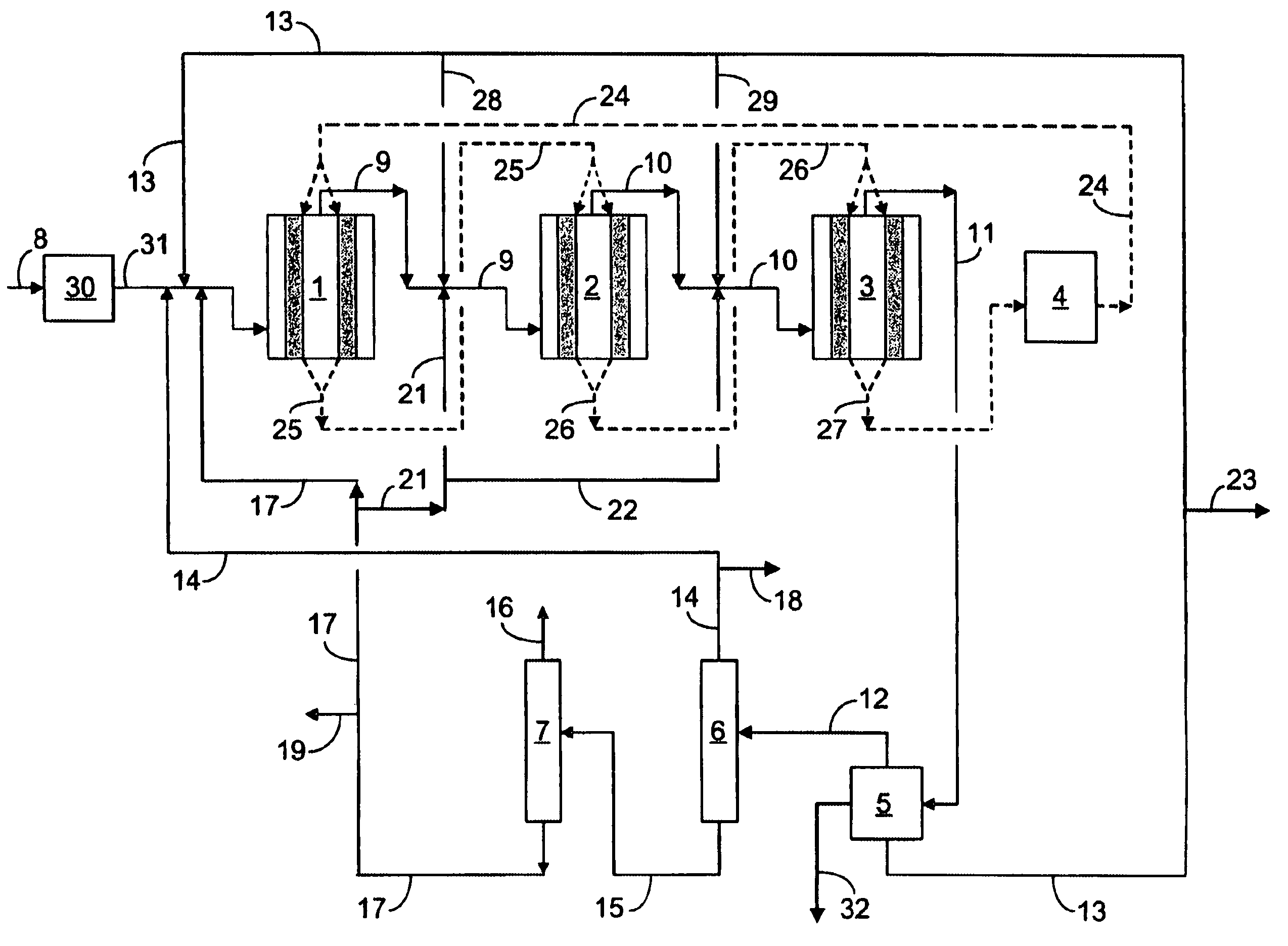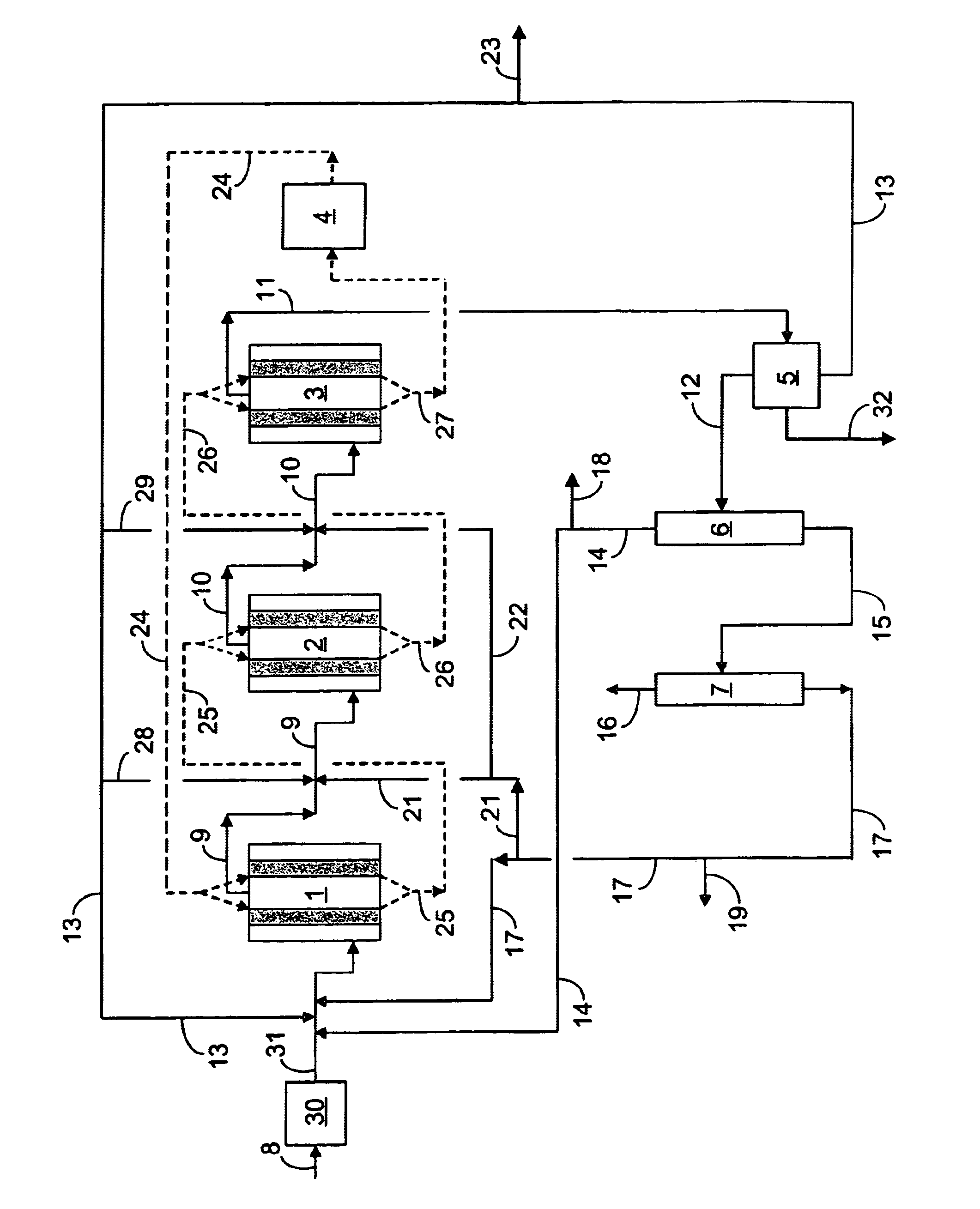Conversion of an alcoholic oxygenate to propylene using moving bed technology and an etherification step
a technology of etherification step and alcoholic oxygenate, which is applied in the direction of hydrocarbon preparation catalysts, bulk chemical production, organic chemistry, etc., can solve the problems of additional loss, dme that was not considered in germany, and market access for this gas is typically not convenient, so as to minimize the severity of the regeneration step, reduce the amount of olefins, and improve the economics of the prior art otp process
- Summary
- Abstract
- Description
- Claims
- Application Information
AI Technical Summary
Benefits of technology
Problems solved by technology
Method used
Image
Examples
Embodiment Construction
[0020]The feedstream charged to the instant OTP process comprises one or more alcoholic oxygenates in admixture with an aqueous diluent. The concentration of the one or more alcoholic oxygenates in the feedstream is preferably at least 70 wt-% while a concentration of 90%+ is preferred with best results obtained when the alcoholic oxygenate in the feedstream is at a level of 95 wt-% or more. The alcoholic oxygenate that is present in the feedstream preferably contains at least one oxygen atom and about 1 to 6 carbon atoms with best results usually obtained with an aliphatic alcoholic oxygenate containing 1 to 4 carbon atoms. Suitable alcoholic oxygenates for use in the instant process include saturated straight or branch chain aliphatic alcohols and their unsaturated counterparts. Representative of suitable aliphatic alcohols include methanol, ethanol, isopropyl alcohol, normal propyl alcohol, butyl alcohol, isobutyl alcohol, t-butyl alcohol, amyl alcohol and mixtures of these aliph...
PUM
| Property | Measurement | Unit |
|---|---|---|
| Temperature | aaaaa | aaaaa |
| Temperature | aaaaa | aaaaa |
| Time | aaaaa | aaaaa |
Abstract
Description
Claims
Application Information
 Login to View More
Login to View More - R&D
- Intellectual Property
- Life Sciences
- Materials
- Tech Scout
- Unparalleled Data Quality
- Higher Quality Content
- 60% Fewer Hallucinations
Browse by: Latest US Patents, China's latest patents, Technical Efficacy Thesaurus, Application Domain, Technology Topic, Popular Technical Reports.
© 2025 PatSnap. All rights reserved.Legal|Privacy policy|Modern Slavery Act Transparency Statement|Sitemap|About US| Contact US: help@patsnap.com


